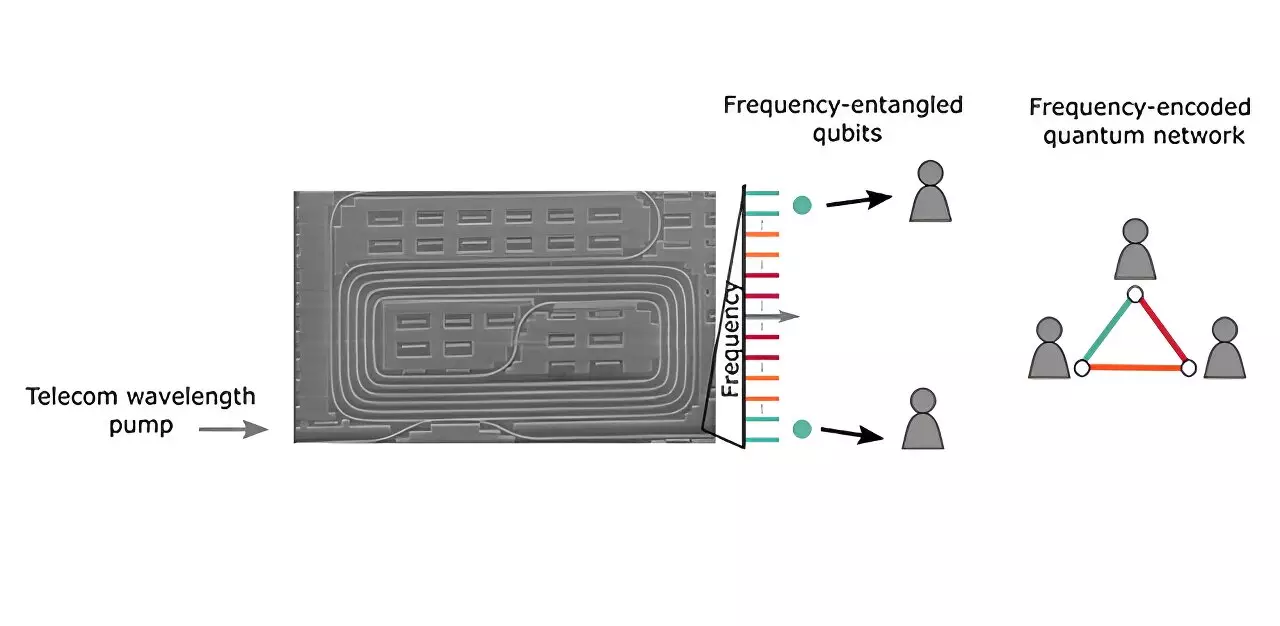In a groundbreaking development for quantum technology, researchers have made a significant stride in utilizing the frequency dimension in integrated photonics. This advancement not only signals progress in quantum computing but also sets the stage for the creation of highly secure communication networks. Integrated photonics, which involves manipulating light within minuscule circuits on silicon chips, has long been viewed as a promising technology for quantum applications due to its scalability and adaptability to existing telecommunications infrastructure.
In a recent study published in Advanced Photonics, a team of researchers from the Centre for Nanosciences and Nanotechnology (C2N), Télécom Paris, and STMicroelectronics (STM) has pushed the boundaries by developing silicon ring resonators that occupy a footprint smaller than 0.05 mm2. These resonators have the capability to produce more than 70 distinct frequency channels, each spaced 21 GHz apart. This breakthrough allows for the concurrent operation and independent control of 34 single qubit-gates using only three standard electro-optic devices. The device can efficiently create frequency-bin entangled photon pairs, which are crucial components in the establishment of quantum networks.
The researchers have demonstrated their ability to exploit narrow frequency gaps to generate and manipulate quantum states using integrated ring resonators. Through a process called spontaneous four-wave mixing, they have successfully generated frequency-entangled states, enabling photons to interact and become entangled. This technique is essential for constructing intricate quantum circuits and sets this research apart due to its practicality and scalability.
To corroborate their approach, the team conducted experiments at C2N, where they performed quantum state tomography on 17 pairs of maximally entangled qubits across various frequency bins. This thorough characterization confirmed the accuracy and coherence of their quantum states, representing a significant stride towards practical quantum computing. Notably, the researchers established what is believed to be the first fully connected five-user quantum network in the frequency domain, marking a pivotal achievement in networking.
This research highlights the potential of silicon photonics in advancing quantum technologies and lays the groundwork for future applications in quantum computing and secure communications. With further advancements, these integrated photonics platforms could transform industries that depend on secure data transmission, offering unprecedented levels of computational power and data security. Dr. Antoine Henry, the corresponding author of the study, emphasizes the scalability and efficiency of frequency-bin utilization in quantum information applications, underscoring the prospect for scalable frequency-domain architectures in quantum communications.
By harnessing the frequency dimension within integrated photonics, researchers have unlocked a plethora of advantages, including scalability, noise resilience, parallelization, and compatibility with existing telecommunication techniques. As the world progresses towards embracing the potential of quantum technologies, this milestone achieved by C2N, Télécom Paris, and STM researchers serves as a guiding light towards a future where quantum networks offer highly secure communication channels.


Leave a Reply